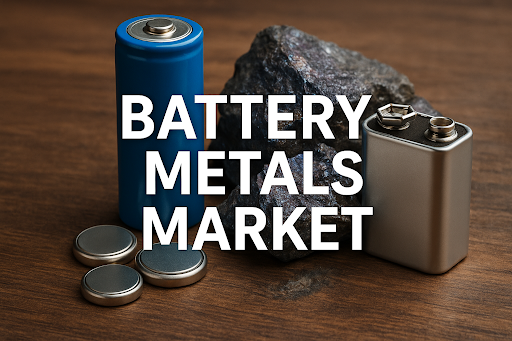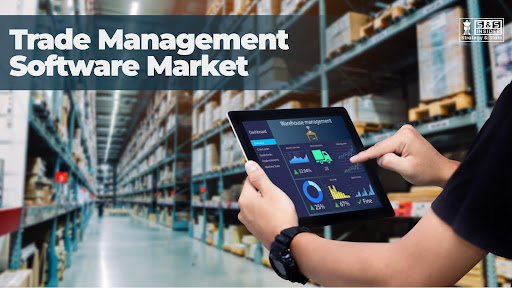The global Battery Metals Market has entered a new phase of accelerated expansion, fueled by the electrification of transportation, the rise of renewable energy storage, and growing industrial adoption of lithium-ion technologies. According to recent data, the market size was valued at USD 10.6 Billion in 2023 and is projected to reach USD 21.3 Billion by 2032, growing at a robust CAGR of 8.1% during the forecast period of 2024–2032. This remarkable growth underscores the world’s increasing reliance on metals like lithium, nickel, cobalt, and manganese—essential materials that power the clean energy revolution.
Rising Energy Transition and the Role of Key Metals
The Battery Metals Market plays a crucial role in enabling the global transition toward decarbonization. As governments implement stricter carbon neutrality goals and consumers shift toward sustainable mobility, the demand for batteries—especially lithium-ion and solid-state technologies—is witnessing exponential growth. Electric vehicles (EVs), portable electronics, and grid-scale energy storage systems collectively contribute to the surging consumption of these metals.
Lithium remains the centerpiece of this transformation, serving as the backbone of rechargeable batteries. Meanwhile, nickel enhances battery energy density, cobalt improves thermal stability, and manganese contributes to cost efficiency and durability. Together, these metals form the building blocks of modern energy solutions, driving innovation across multiple industries from automotive manufacturing to renewable energy infrastructure.
Key Market Drivers Fueling Expansion
1. Rapid Electrification of Transportation:
One of the primary forces behind the market’s expansion is the global shift toward electric mobility. Leading automakers are investing billions to scale up EV production and develop next-generation batteries with higher range and efficiency. Government policies promoting zero-emission vehicles, combined with consumer awareness of environmental impact, are significantly boosting battery metal demand.
2. Surge in Renewable Energy Storage Solutions:
The integration of intermittent renewable sources such as wind and solar into national grids has amplified the need for efficient energy storage. Battery metals, particularly lithium and nickel, are central to large-scale storage solutions that stabilize power supply and ensure grid reliability.
3. Growing Investment in Mining and Recycling:
To meet the projected surge in demand, major players are expanding mining operations and exploring alternative sources such as deep-sea and brine extraction. Additionally, battery recycling technologies are gaining momentum, allowing recovery of valuable materials and reducing dependency on newly mined resources.
4. Technological Innovations in Battery Chemistry:
Advancements in cathode and anode materials, such as lithium iron phosphate (LFP) and nickel-manganese-cobalt (NMC) chemistries, are enhancing performance and safety. These innovations are not only improving energy density but also driving down costs, making electric solutions more accessible worldwide.
5. Strategic Collaborations and Government Initiatives:
Governments across the U.S., Europe, and Asia-Pacific are offering incentives and funding for battery supply chain development. Strategic partnerships between mining companies, automakers, and energy firms are also creating integrated ecosystems that ensure long-term availability of battery-grade metals.
Challenges and Future Outlook
While the growth trajectory appears promising, the market faces challenges such as supply chain constraints, fluctuating metal prices, and environmental concerns associated with mining. However, the industry’s commitment to sustainability is paving the way for responsible sourcing practices and circular economy initiatives.
For instance, companies are increasingly investing in traceability systems and ESG compliance to ensure ethical sourcing of cobalt and nickel. Moreover, innovations in battery design are enabling easier recycling and material recovery, thereby reducing ecological impact.
The shift toward alternative materials such as sodium-ion and solid-state batteries could also reshape the demand dynamics for traditional battery metals. However, given the maturity and scalability of lithium-ion technologies, lithium, nickel, and cobalt are expected to maintain their dominance through 2032.
The Road Ahead
The Battery Metals Market is entering a transformative decade marked by technological innovation, sustainable practices, and global cooperation. Emerging economies in Asia-Pacific—particularly China, Indonesia, and Australia—are at the forefront of supply and processing, while North America and Europe are strengthening domestic production capabilities to reduce import dependency.
As electrification expands beyond vehicles to aviation, shipping, and industrial equipment, the need for efficient and durable batteries will skyrocket. This will inevitably lead to heightened exploration and production of essential metals, fostering economic growth and advancing the clean energy transition.
Furthermore, with leading companies such as Albemarle, Glencore, Vale, and Tianqi Lithium investing heavily in new mining and refining projects, the supply landscape is becoming more diversified and resilient. The ongoing collaboration between technology developers and raw material suppliers will ensure that innovation keeps pace with sustainability demands.
Conclusion
In conclusion, the Battery Metals Market is set to witness exponential growth over the next decade, supported by an unprecedented rise in electric vehicle production, renewable energy integration, and battery innovation. Despite challenges related to supply and environmental management, the industry’s trajectory remains upward, signaling a new era of clean energy infrastructure built on sustainable material sourcing.
With a projected valuation of USD 21.3 Billion by 2032, this market stands as a cornerstone of the global energy transformation—empowering industries, enabling carbon neutrality, and shaping the future of mobility and energy storage.
Frequently Asked Questions (FAQs)
Q1: What is the CAGR of the Battery Metals Market during 2024–2032?
The Battery Metals Market is projected to grow at a CAGR of 8.1% over the forecast period of 2024–2032.
Q2: What is the forecast value of the Battery Metals Market by 2032?
The market is expected to reach USD 21.3 Billion by 2032, doubling from its 2023 valuation.
Q3: Which regions are expected to see the most growth in this market?
Asia-Pacific is expected to dominate the market due to strong manufacturing bases in China, Australia, and Indonesia, followed by rapid growth in North America and Europe driven by EV adoption and clean energy policies.










